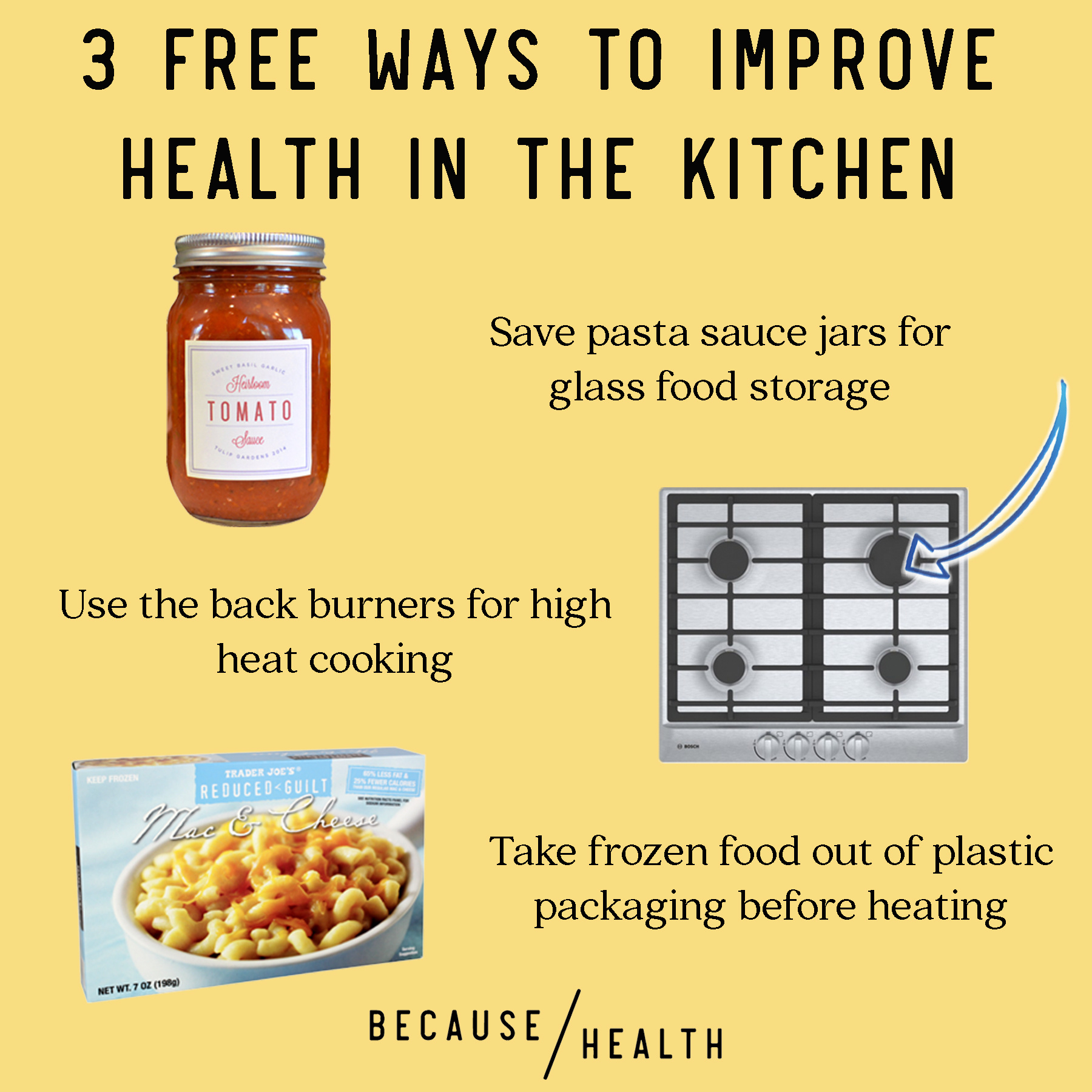Easy and Free Ways to Improve Your Health in the Kitchen
Because health has never been more important!
One thing everyone is doing during the pandemic is cooking a lot more at home. In uncertain times, we have to make our money go further than ever before, especially when it comes to food and cooking.That’s why we’ve been eating more canned and frozen food recently, all while trying to use up as many pantry staples as possible.
But how do you maintain good health practices while saving money? It seems like a lot of ways to improve your health through your food and diet involve purchasing an expensive appliance or spending more on fancy groceries. That’s why we’re highlighting three things you can do in the kitchen that are good for your health but that are totally and completely free! Each tip is easy to implement, will benefit your health now, and helps prevent future diseases. Try one out this week!

Tip 1: Save pasta jars. Store bought pasta sauce can save a lot of prep time before dinner. The next time you’re craving pasta, make sure to save the glass jar the sauce comes in! Glass pasta sauce jars are big and sturdy, which makes it great for storing pantry items like nuts and beans, leftovers, or soups and broths. These glass jars make it easy to switch from plastic food storage containers because you don’t even have to buy anything extra. Plastic additives like BPA and phthalates can cause some serious negative health impacts like breast cancer, reduced sperm production, infertility, heart disease, early onset of puberty in girls, diabetes, and obesity (1), so we really don’t want it anywhere near our food. A glass pasta sauce jar is a great free food storage container that is better for your health.
Tip 2: Use the back burner on your stove, especially for high heat cooking. Stoves with gas burners have a tendency to release ultrafine particles and nitrogen dioxide into the air (2,3). Even electric ranges can release ultrafine particles, although at much smaller amounts. A typical range hood can suck up smoke and other particulate matter much easier from the back burners vs the front ones, meaning that your indoor air quality won’t take such a big hit every time you cook (2). If you have younger kids, using the back burners whenever possible is also the best choice when it comes to preventing accidents. That’s why we recommend always using the back burner and turning on the range hood when you cook! A range hood can decrease the amount of particulate matter and NO2 by up to 90%, but if you don’t have one, just opening a window or turning on a fan is the best for healthy indoor air quality.
Tip 3: Heat frozen food out of plastic packaging. Frozen food is awesome for those nights when you simply can’t be bothered to cook. We’ve all been there! But most frozen food comes in plastic packaging, with instructions that tell you to heat the food in the plastic trays and sometimes even with the plastic cover. We know that microwaving plastic can cause harmful chemicals to leach into food (4). And even relatively safer plastics (including BPA-free plastics) have been shown to release hormone disrupting chemicals when heated (5). Plus, a lot of frozen food seems to come in black plastic, which is extra harmful. So an easy solution is to transfer the food into an oven or microwave-safe bowl or plate and then heat it up! For the microwave, glass or ceramic are the best options and for the oven you can use stainless steel, glass, or ceramic. A parchment paper lined aluminum baking tray is also a great option.
Along with these tips, don’t forget to store vegetables and fruits properly. Keeping fruit and veg fresh for as long as possible is one way to save money and have a healthy diet during these times.
- https://www.ncbi.nlm.nih.gov/pmc/articles/PMC2967230/
- https://www.sciencedirect.com/science/article/abs/pii/S036013231730255X
- https://scopeblog.stanford.edu/2018/03/06/use-your-range-hood-for-a-healthier-home-advises-indoor-air-quality-researcher/
- https://onlinelibrary.wiley.com/doi/full/10.1111/1541-4337.12028
- Yang, Chun Z., et al. “Most plastic products release estrogenic chemicals: a potential health problem that can be solved.” Environmental health perspectives 119.7 (2011): 989-996.
